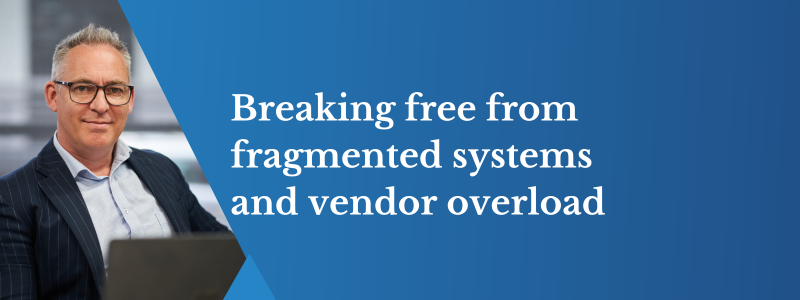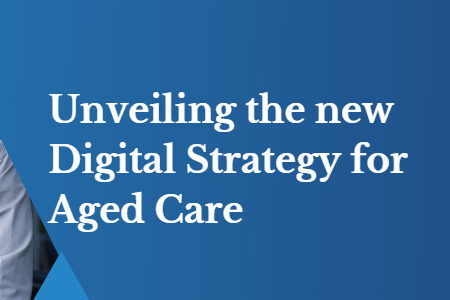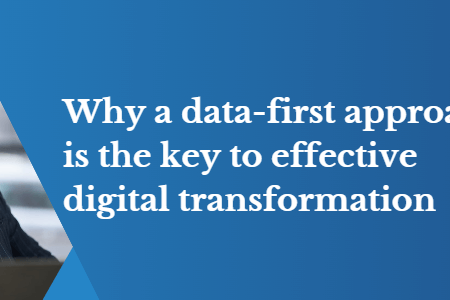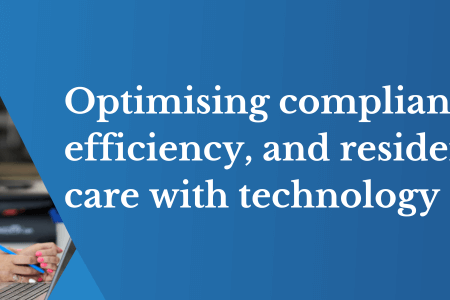Breaking free from system fatigue in Aged Care: The search for true integration
February 5, 2025 | Technology

By Andrew Farmer, Managing Partner and CEO
Aged care providers, like many in healthcare and other industries, are drowning in a sea of systems and vendors. The need to manage multiple core systems – often sourced from different vendors – has created a fragmented digital ecosystem that is inefficient, frustrating, and counterproductive. On the other hand, providers who opt for a single vendor’s system with multiple bolted-on modules often find that these solutions are patchy at best. Neither option is ideal, and the sector is growing weary of the struggle to make these disjointed tools work together.
The vendor overload problem
Running an aged care facility requires a plethora of systems: clinical management, workforce rostering, finance, compliance tracking, incident management, resident engagement, and more. Each of these systems is typically built by a different vendor, leading to:
- Data silos: Systems don’t talk to each other, meaning information is scattered and requires manual re-entry.
- Inefficiency: Frontline staff waste precious time navigating between platforms instead of focusing on resident care.
- Security risks: More vendors mean more potential points of failure in cybersecurity and compliance.
- Integration headaches: Getting systems to share data often requires costly middleware or custom APIs, which add yet another layer of complexity.
Some providers have tried to solve this by choosing an all-in-one system that promises to cover all their needs. However, these solutions are often a patchwork of hastily developed modules that don’t perform as well as dedicated, best-in-class applications. The result? Frustrated users and a system that still doesn’t deliver.
The unicorn: A true integrated platform for Aged Care
For years, providers have been searching for the elusive “unicorn” system—one that offers a true platform experience. The vision is clear: instead of juggling multiple disconnected systems or suffering through subpar all-in-one solutions, aged care providers need a secure, flexible, and truly integrated SaaS environment. Here’s what that could look like:
- Shared data backbone: Instead of separate databases for each application, a true platform would allow different applications to operate on a shared data structure. This would eliminate duplicate data entry, ensure consistency, and provide a single source of truth.
- Plug-and-play applications: Providers should have access to the best applications for their needs—whether it’s clinical management, rostering, or finance—without worrying about integration issues. If all applications are connected to the same platform, they can seamlessly exchange data.
- Built-in AI agents: AI is revolutionising healthcare, but for it to be truly effective, it needs access to unified data. A smart platform would not only assist with operational tasks (such as rostering optimisation and predictive maintenance) but also with complex clinical insights, early detection of health risks, and strategic decision-making.
- BI and analytics-ready: Many providers have invested heavily in Business Intelligence (BI) tools, but these tools can only be as effective as the data they have access to. A platform where systems automatically share data would allow providers to generate deeper insights, make better decisions, and even predict future trends in resident care and business operations.
- Device and sensor integration: The future of aged care will involve even more data, with wearables, remote monitoring devices, and IoT-enabled infrastructure playing a crucial role. A modern platform should be built to accommodate this influx of real-time data, helping providers make proactive and informed decisions.
The future: No room for data silos
The current model of fragmented systems and vendor overload is unsustainable, and the need for a true integrated platform is more pressing than ever. If aged care providers want to leverage AI, streamline operations, and improve resident care, they must break free from the limitations of disconnected systems.
The path forward requires:
- Vendors to rethink their approach and move towards integrated, API-driven architectures.
- Providers to demand more interoperability and reject closed, inflexible systems.
- Industry collaboration to build an ecosystem where applications seamlessly work together.
The final frontier will be the full integration of people, processes, and technology—where data moves freely, AI augments human decision-making, and aged care providers can focus on what truly matters: delivering exceptional care.
To learn more on implementing an integrated solution for your aged care facility, reach out today.


